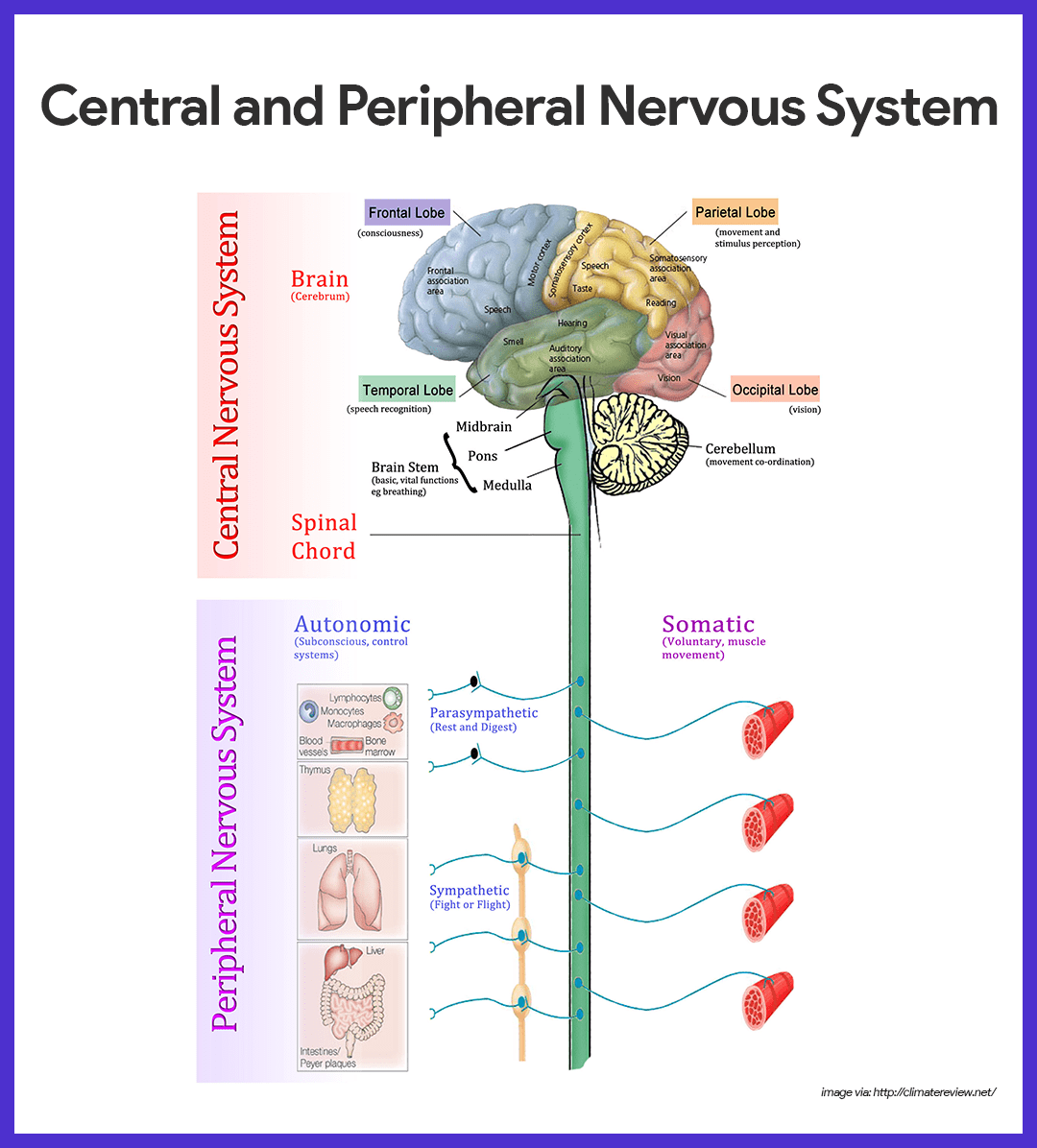

The first is the somatic nervous system, which conducts impulses from the brain and spinal cord to skeletal muscle, thereby causing us to respond or react to changes in our external environment. The motor system can be further subdivided into two subcategories. The PNS can be divided into two subcategories: the sensory system, which consists of afferent or sensory neurons that convey information from receptors in the periphery of the body to the brain and spinal cord, and the motor system, which consists of efferent or motor neurons that convey information from the brain and spinal cord to muscles and glands. This system consists of all the nerves that connect the brain and spinal cord with sensory receptors, muscles, and glands. The peripheral nervous system (PNS) is subdivided into several smaller units. All body sensations and changes in our external environment are relayed from receptors and sense organs to the CNS to be interpreted. It consists of the brain and spinal cord. The first is the central nervous system (CNS), which is the control center for the whole system. The nervous system is divided into two main parts, anatomically : The central nervous system and the peripheral nervous system. Here is a chart showing different divisions of the nervous system.


 0 kommentar(er)
0 kommentar(er)
